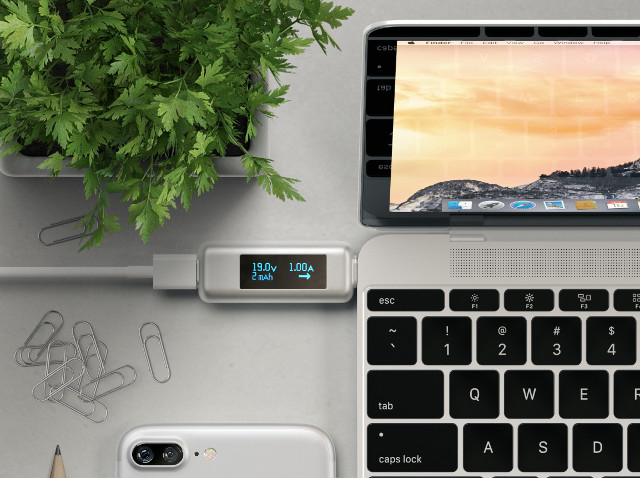CHARGER Doctor is a popular USB power meter for USB 2.0 ports that can help you check whether your charger delivers the promised amperage, and if you are dealing with USB powered device you can easily measure the power drawn by that device. But we are now in 2017, and USB type C has become more and more popular, and can deliver higher voltages higher than 5V, as well as higher currents. So if you are looking for USB type C power meter, Satechi has you covered.
 Satechi USB-C power meter key features and specifications:
Satechi USB-C power meter key features and specifications:
- Voltage Range – 4V-20V
- Current Range – 50mA-10W
- Max readable Power – 65W
- Indicates power over time (mAh) and current direction (e.g. charger to laptop, or laptop to phone).
- USB 3.1 data pass-through supported
- Dimensions – 6.3 x 2 x 0.8 mm
- Weight – 8.6 g
Beside just measuring power usage, several blogs report this USB-C power meter might be able to help you detect bad cables or power adapters, as people have reported frying equipment in the past, and a USB Type-C Authentication Specification has even been announced last year to work around the issue. I’m not sure how you are supposed to do to test cables/adapters safely, as user reviews indicate the display will only turn on if you are actually charging a device.
The meter is currently for sale for $30 on Amazon US, and you may find more details on the product page.
Via Liliputing & Gizmodo

Jean-Luc started CNX Software in 2010 as a part-time endeavor, before quitting his job as a software engineering manager, and starting to write daily news, and reviews full time later in 2011.
Support CNX Software! Donate via cryptocurrencies, become a Patron on Patreon, or purchase goods on Amazon or Aliexpress




